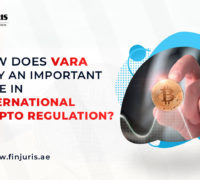VARA and Crypto are the two main buzzwords spreading like wildfire across the Middle East. Dubai’s Virtual Assets Regulatory Authority (VARA) took the crypto world by storm after being one of the first regulatory authorities for regulating cryptocurrency-related activities. This regulatory authority, being one of its kind, enticed many virtual asset services providers from every … Read More →
The demand for cryptocurrencies is growing as more firms want to utilize them for payment and investing purposes. However, many potential cryptocurrency users are hesitant to use the technology due to a lack of knowledge. And here is when crypto consulting firms become beneficial.There are several crypto consulting firms. As a result, selecting the … Read More →
Navigating the Forex Landscape: Understanding Forex Broker License and Forex Business License In the world of financial markets, Forex trading serves as a cornerstone for global currency exchange. For businesses looking to engage in Forex brokerage services, obtaining the necessary licenses is not just a legal requirement but a key to credibility and trust in … Read More →
The United Arab Emirates (UAE) has been a popular destination for business enthusiasts looking for exciting opportunities in a tax-friendly setting. Among the different options available, the Ras Al Khaimah Distributed Autonomous Organization (RAK DAO) stands out as a unique entity. Choosing the RAK DAO License offers a structured legal framework for your Decentralized Autonomous … Read More →
Stablecoins and the demand for Stablecoin licenses have gained significant popularity in the current financial landscape due to their unique characteristics and potential applications. A stablecoin is a type of cryptocurrency designed to maintain a stable value by pegging it to a reserve of assets or a fixed exchange rate. Unlike traditional cryptocurrencies such as … Read More →
Obtaining a cryptocurrency exchange license in UAE is a regulated process governed by the UAE’s regulatory authorities, primarily the Financial Services Regulatory Authority (FSRA) within the Abu Dhabi Global Market (ADGM) and the Dubai Financial Services Authority (DFSA) in the Dubai International Financial Centre (DIFC). To secure a license, applicants must adhere to stringent AML … Read More →
The Visual Artists Rights Act (VARA) is a federal law in the United States that protects the moral and legal rights of visual artists. It was enacted in 1990. VARA grants artists certain rights, including the right to claim authorship of their work, the right to prevent the destruction or alteration of their work without … Read More →
Introduction The concept of a metaverse has captured the imagination of people worldwide, promising a digital realm where individuals can interact, work, and play in immersive virtual environments. Dubai, known for its forward-thinking approach and commitment to innovation, is no stranger to embracing cutting-edge technologies. Metaverse License, Metaverse Consulting, and Metaverse Lawyer are key components … Read More →
The term “metaverse” has been making waves in recent years, gaining momentum as technology continues to advance. The metaverse is often described as a collective virtual shared space, merging aspects of augmented reality (AR), virtual reality (VR), and the internet. It is a digital realm where people can interact, socialize, work, and even conduct business. … Read More →
Introduction – The metaverse is a rapidly evolving concept that represents a collective virtual shared space, merging elements of the physical and digital worlds. It is often described as a fully immersive, interconnected, and persistent digital universe where users can interact, create, and engage with one another through avatars, artificial intelligence, augmented reality (AR), and … Read More →










